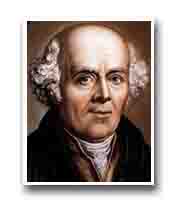Zincum Iodatum. Iodide of Zinc. Zincic iodide. ZnI2. Solution in syrup. Trituration. Clinical.-Constipation. Cough. Phthisis. Characteristics.-Zn. i. has been proved by American provers, and some well-defined symptoms were Read more…
Category: Materia Medica by John Henry Clarke
Zincum Cyanatum.
Zincum Cyanatum. Cyanide of Zinc. Zincic Cyanide. Zn(CN)2. Trituration. (Low attenuations should be freshly made.) Clinical.-Chorea. Convulsions. Epilepsy. Hysteria. Meningitis. Paralysis agitans. Petit mal. Characteristics.-Zn. cy. produces the Read more…
Zincum Bromatum.
Zincum Bromatum. Bromide of Zinc. Zincic bromide. ZnBr2. Solution. Clinical.-Chorea. Dentition. Hydrocephalus. Characteristics.-Hale has used Zn. br. on its double indications for teething children who suffer intensely from Read more…
Zincum Aceticum.
Zincum Aceticum. Acetate of Zinc. Zn(C2H3O2)23H2O. Solution. Clinical.-Diarrhoea. Erysipelas. Gastritis. Night-watching, effects of. Toothache. Characteristics.-Zn. ac. was proved by Hahnemann and others. The most Peculiar Symptoms were these: Read more…
Zincum.
Zincum. Zincum metallicum. Zinc. An Element. Zn. A. W. 64.9. Trituration of the metal. Clinical.-Alcoholism. Amblyopia. Asthma. Brain-fag. Brain, paralysis of. Breasts, affections of. Cataract. Chilblains. Chin, eruption on. Read more…
Zea.
Zea. Zea mays. Maize. Indian Corn. N. O. Gramineae (Tribe, Phalarideae). 1. STIGMATA MAIDIS. Corn Silk. Green pistils. Tincture: One part, by weight, of the Silk to two of Read more…
Yucca Filamentosa.
Yucca Filamentosa. Yucca filamentosa. Bear Grass. N. O. Melanthaceae (Liliaceae). Tincture of root and leaves when not in flower. Tincture of flowers. Clinical.-Biliousness. Coryza. Diarrhoea. Flatulence, odourless. Headache; temporal. Read more…


